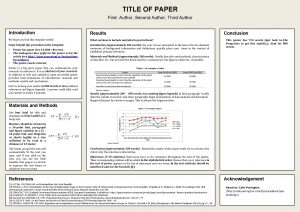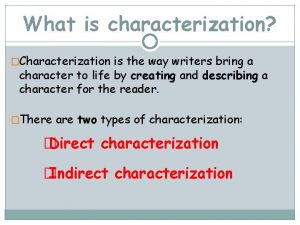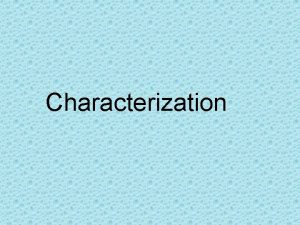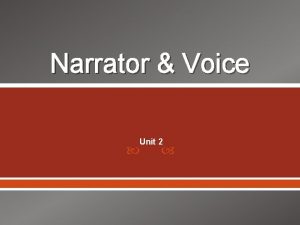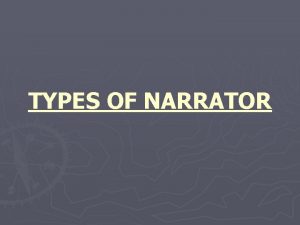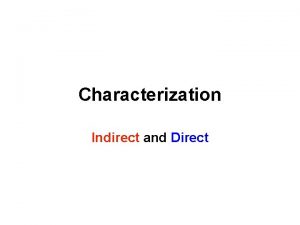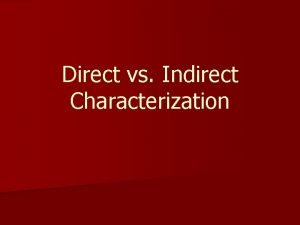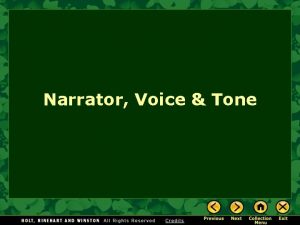Direct Characterization Direct characterization the author or narrator






![Example Jane (Character) [Slamming her hands down on the table] (Stage Directions) Can you Example Jane (Character) [Slamming her hands down on the table] (Stage Directions) Can you](https://slidetodoc.com/presentation_image/259e7142eb4364e187fab0556ff36649/image-7.jpg)

- Slides: 8

Direct Characterization • Direct characterization: the author or narrator makes direct statements about a character’s traits. The author tells us about the character’s personality to our face. • TELLING • Example: • “The patient boy and quiet girl were both well mannered and did not disobey their mother. ” • Explanation: The author is directly telling the audience the personality of these two children. The boy is “patient” and the girl is “quiet. ”

Indirect Characterization • Indirect characterization: the author or narrator reveals a character’s traits through his or her actions and speech. • In other words, Direct Characterization is where the author tells the reader about the character and Indirect Characterization is where the character reveals information about himself through speech, dress, or actions.

Indirect Characterization • SPEECH - What does the character say? How does the character speak? • “I hate doing homework, ” she said. “It’s so boring. ” • ACTIONS - What does the character do? How does the character behave? • Jane crossed her arms and glared at her brother. “It’s my turn to pick what we watch on T. V. , ” she yelled. • LOOKS - What does the character look like? How does the character dress? • The boy adjusted his lettermen’s jacked, which contained several pins for football, basketball, and track.

Direct or Indirect Characterization? • A. The old mechanic hated modern electronics, preferring the old days when all he needed was a stack of manuals and a good set of tools. • Direct!

Direct or Indirect Characterization? • B. “That Ed Johnson, ” said Anderson. “He hasn’t got a clue about modern electronics. Give him a good set of tools and he’d be as happy as a hungry frog in a fly-field. ” • Indirect!

How we write dialogue and stage directions. • In a play, how we write dialogue and stage directions is important. • For this exercise, you will be putting the characters name to the left hand side of the page. Underneath, you will be providing dialogue and stage directions.
![Example Jane Character Slamming her hands down on the table Stage Directions Can you Example Jane (Character) [Slamming her hands down on the table] (Stage Directions) Can you](https://slidetodoc.com/presentation_image/259e7142eb4364e187fab0556ff36649/image-7.jpg)
Example Jane (Character) [Slamming her hands down on the table] (Stage Directions) Can you please be quite! I can’t focus! (Dialogue) Marcus [Singing along to the music on his headphones] What does the fox say! Ring-ding-dingeringeding! Jane [Throwing a book at Marcus) I SAID BE QUITE!

 First author second author third author
First author second author third author Indirect characterization meaning
Indirect characterization meaning What is direct and indirect characterization
What is direct and indirect characterization Indirect characterization
Indirect characterization Direct characterization spongebob
Direct characterization spongebob Characterization is the way an author
Characterization is the way an author In direct characterization
In direct characterization Characterization is the way an author
Characterization is the way an author Characterization is the way an author
Characterization is the way an author
